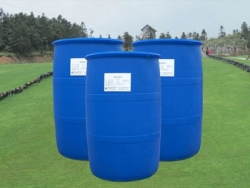This paper summarizes the research progress of biosurfactants in bioremediation of organic pollution in recent years, and looks forward to the development direction of this technology. This will lay the foundation for the research and application of this method in our country.

Organic pollutants in soil, due to its persistence and potential threat to human health, have attracted more and more attention. The organic pollutants remaining in the soil not only affect the normal function of the soil and reduce the quality of the soil environment, but also can enter the food chain through bioaccumulation and endanger human health. In the remediation of contaminated soil, microbial remediation technology has the advantages of non-destructive, economical and safe compared with physical and chemical remediation. This makes it one of the most promising technologies for remediation of polluted environments.
Biosurfactants are a class of biological compounds with surface activity produced by microorganisms. In addition to the physical and chemical properties of chemically synthesized surfactants, they also have the advantages of non-toxicity and high efficiency. Alternatives or upgrades to synthetic surfactants.
Due to the hydrophobicity of organic pollutants and the fact that pollutants may be strongly adsorbed on the surface of soil particles or enter soil pores, the concentration of pollutants in the aqueous solution is reduced, resulting in the isolation of microorganisms and pollutants. Microbial degradation of pollutants is halted or slowed due to the inability of microorganisms to utilize pollutants at very low concentrations.
Therefore, the decisive factor affecting the degradation of organic pollutants in bioremediation is the low water solubility of the pollutants, which limits their bioavailability. However, the solubility of organic pollutants can be increased by the application of surfactants, the bioavailability of refractory organics can be improved, and the degradation of organic pollutants can be promoted. Chemical surfactants have limited solubilizing ability, low repair efficiency, high cost, and easy to cause surfactant pollution. Compared with chemical surfactants, biosurfactants have the characteristics of lower toxicity, better environmental compatibility, and lower cost. Recently, more attention has been paid to biosurfactants, and more and more related researches have been done.